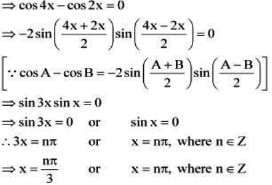Chandigarh TGT Science - Non Medical Mock Test - 9 - SSA Chandigarh MCQ
30 Questions MCQ Test - Chandigarh TGT Science - Non Medical Mock Test - 9
The ratio of 1 hour to 300 seconds is:
How many hosts can successfully send data simultaneously on the Ethernet?
What plaything was invented by Joe McVicker in 1956?
ਹੇਠ ਲਿਖੇ ਵਾਕ ਵਿੱਚੋ ਸਬੰਧਮਾਨ ਚੁਣੋ
ਰਾਹੁਲ ਨੇ ਸ਼ਰਾਬ ਪੀਤੀ
Choose the word which is different from the rest.
The wavelength of X-rays is of the order of:
Ten million electrons pass from point P to point Q in one micro second. The current and its direction is
No force is exerted by magnetic field on a stationary
A convex lens forms a real image of an object on a screen; the magnification of the image being 3/2. The object and the screen are kept fixed and the lens is moved through a distance of 16 cm when a sharp image is again formed on the screen; the magnification now being 2/3. What is the focal length of the lens?
What is the maximum current that can be drawn from a cell of emf E and internal resistance r connected to an external resistance R?
The frequency (v) of charged particle, moving at right angles to the magnetic field is independent of
We have a right angled isosceles prism, Its refractive index is 1.5. If we incident a ray normally on one of the two perpendicular surfaces, which of the following phenomenon will take place?
In a current carrying conductor varying electric field generates
The inverse of conductivity is called:
Which of the following configurations represents a noble gas?
Which of the following reactions defines ΔfH° ?
Which of the following is a characteristic property of both mixtures and compounds?
The function f (x) = x2 – 2 x is increasing in the interval
The solution of cos 4x = cos 2x
In a box containing 100 Ipods, 10 are defective. The probability that out of a sample of 5 Ipods, exactly 1 is defective is:
The feasible solution of a L.P.P. belongs to
The function f(x) = ax, 0 < a < 1 is
The non zero value of ‘a’ for which the lines 2x – y + 3z + 4 = 0 = ax + y – z + 2 and x – 3y + z = 0 = x + 2y + z + 1 are co-planar is
If tan 2A = cot (A – 18°), then the value of A is
























